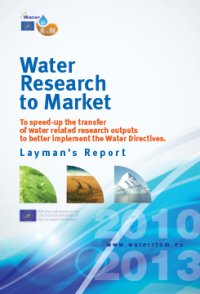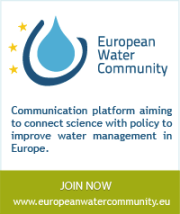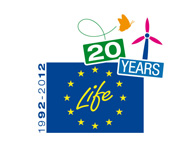HIBROX
| Output characterisation | |
| OUTPUT SENTENCE | Technology based on hybrid biotechnological process for the wastewater treatment with high content of ammonium |
| OUTPUT TYPE | prototype |
| WATER TOPIC | Quality of natural systems |
| KEYWORDS | Quality of natural systems, urban pollution, industrial pollution, Agricultural pollution, surface water, groundwater |
| KEYWORDS TYPE | Technology |
| MARKET NEED TAILORED | Obligations of advanced treatment (eutrophic effect nutrient removal) derived from Government Decision 352/2005 and Directive 98/15/EC with the main objective of environmental protection against the side-effects caused by discharges of urban wastewater and some industrial wastewater. The technology is useful for upgrading sewage treatment plants which have problems with removal of nitrogen compounds or insufficient capacity of the aeration system, by decreasing ammonium nitrogen load of the biological stage influent. |
| OUTPUT DESCRIPTION | There were constructed experimental models for conducting experiments of treatment for the ammonium high content wastewater streams, such those from urban sludge derived from dehydrating of anaerobically fermented ones (experimental model for the partial nitrification-SHARON, experimental model for the anaerobic oxidation of the ammonium-ANAMMOX). The experiments were undertaken on waters from the sludge dehydration facilities of Focsani and Pitesti treatment stations. ?Using these experimental models, there were performed partially aerobic biological oxidation experiments of the ammonium to nitrite, with and without automatic pH control, and anaerobic biological oxidation experiments of the ammonium at different retention times and specific loads in recommended areas of temperature, pH and dissolved oxygen. It was designed and developed a mathematical model of SHARON process kinetics by considering two substrata: ammonium and nitrite and two types of microorganisms that coexist in the reactor, microorganisms that oxidize ammonium, Nitrosomonas type, and microorganisms that oxidize nitrite, Nitrobacter type. The theoretical results were compared with experimental ones, resulting in a good correlation between them. Biological sludge samples were analyzed in order to detect various types of microorganisms by PCR amplification 16S-rRNA gene biomerker in the case of ANAMMOX bacteria (eg, Brocade, Kuenenia and Scalindua) in anaerobic samples, and of some bacteria belonging to Nitrobacter and Nitrosomonas. The results indicated the presence of bacterial species of interest for cases. The proposed technology is based on the process of deammonification where, in a primary stage there are obtained by partial nitritification approximately equal quantities of N-NH4+ and N-NO¬2- and in the second stage these turn into nitrogen gas through an anaerobic ammonium oxidation reaction. Partial nitritification is performed in a bioreactor with Nitrosomonas sp. bacteria and the anaerobic ammonium oxidation is performed in a second bioreactor with Anammox bacteria by reactions:
In the experimental model, the achieved yields of transformation were:
|
| STATE OF DEVELOPMENT | The small scale pilot (experimental model) |
| INNOVATIVE ASPECTS AND ADVANTAGES | The innovative character of technology consists in removing the ammonium from ammonium concentrated water streams originating from anaerobic fermentation of sludge dehydration facilities of municipal sewage treatment plants, of which contribution to nitrogen loading of their influence is estimated at 10-20% through the use of nitrite (NH4+ ®NH4+ + NO2- ®N2) who will save nearly 60% of oxygen and almost 100% of the consumption of carbon source and produce a quantity of sludge smaller by 40% compared with the classic nitrification-denitrification procedure (NH4+ ® NO2- ® NO3- ® N2) currently applied in Romania. |
| INTELLECTUAL/INDUSTRIAL PROPERTY RIGHTS | IPR belong to the partners. Project results can be available for users interested in promoting industrial pilot phase. |
| TRANSFERABILITY | Based on experimental model results obtained, in order to be transferred, the technology must go through the industrial pilot phase. |
| POTENTIAL USERS/CLIENTS | Water and sewerage operators, operators that generate industrial wastewater with high load of ammonium (hundreds of mg / L) and low organic loading. |
| Estimation of risks | |
| EVALUATION OF RISKS FOR OUTPUT USERS | For end-users (final beneficiaries) market risk are not relevant. The technology will not be transfer further. Intermediate users (technology suppliers ) have to integrate the technology in larger wastewater process treatment. |
| ECONOMICAL RISKS | ? |
| TECHNICAL RISKS | Risks cover the following aspects and make it necessary to go through pilot phase: ?- long duration of priming (~ 6 months) the phase of anaerobic ammonium oxidation (low speed of specific Anammox bacteria growing); ?- high sensitivity of bacteria to some |
| MARKET RISKS | Intermediate users (technology suppliers ) have to compete with classical method which are more known. |
| Steps ahead | |
| NEXT STEPS TO ACHIEVE THE STATUS 'READY TO USE' | Completion of the industrial pilot phase |
| TYPE OF PARTNER FOR THE NEXT DEVELOPMENTS | Water utilities and industrial operators (producers of fertilizers, explosives, livestock farms) |
| TASKS TO BE PERFORMED | Financing industrial pilot phase. |
| COLLABORATION DETAILS | Cooperation, technical assistance and financing agreement of the industrial pilot phase |
| Estimation of ressources | |
| RESOURCES FOR NEXT STEPS |
|
| Contact | |
| TECHNICAL CONTACT | Eng. Ion Viorel Patroescu, PhD. eng. Costel Bumbac. |
| COUNTRY | ROMANIA |
| WEBSITE | www.incdecoind.ro |
| WATER RTOM CONTACT | CFPPDA |
| Background | |
| PROJECT NAME | Hybrid biotechnological process for the treatment of ammonium high content wastewater |
| PROJECT ACRONYM | HIBROX |
| PROJECT DESCRIPTION | There were constructed experimental models for conducting experiments of treatment for the ammonium high content wastewater streams, such those from urban sludge derived from dehydrating of anaerobically fermented ones (experimental model for the partial nitrification-SHARON, experimental model for the anaerobic oxidation of the ammonium-ANAMMOX). The experiments were undertaken on waters from the sludge dehydration facilities of Focsani and Pitesti treatment stations. ?Using these experimental models, there were performed partially aerobic biological oxidation experiments of the ammonium to nitrite, with and without automatic pH control, and anaerobic biological oxidation experiments of the ammonium at different retention times and specific loads in recommended areas of temperature, pH and dissolved oxygen. ?It was designed and developed a mathematical model of SHARON process kinetics by considering two substrata: ammonium and nitrite and two types of microorganisms that coexist in the reactor, microorganisms that oxidize ammonium, Nitrosomonas type, and microorganisms that oxidize nitrite, Nitrobacter type. The theoretical results were compared with experimental ones, resulting in a good correlation between them. ?Biological sludge samples were analyzed in order to detect various types of microorganisms by PCR amplification 16S-rRNA gene biomerker in the case of ANAMMOX bacteria (eg, Brocade, Kuenenia and Scalindua) in anaerobic samples, and of some bacteria belonging to Nitrobacter and Nitrosomonas. The results indicated the presence of bacterial species of interest for cases. ?The proposed technology is based on the process of deammonification where, in a primary stage there are obtained by partial nitritification approximately equal quantities of N-NH4+ and N-NO¬2- and in the second stage these turn into nitrogen gas through an anaerobic ammonium oxidation reaction. Partial nitritification is performed in a bioreactor with Nitrosomonas sp. bacteria and the anaerobic ammonium oxidation is performed in a second bioreactor with Anammox bacteria by reactions: ?Nitritificare: ?2,34 NH4+ + 1,85 O2 + 2,66 HCO3- ® 0,024 C5H7NO2(Nitrosomonas) + NH4+ + 1,32 NO2- +2,54 CO2 + 3,94 H2O ? ?Anammox: ?NH4+ + 1,32 NO2- + 0,066 CO2 + 0,066 H+ ®0,066 CH2O0,5N0,15 (ANAMMOX) + 1,02 N2 +0,26 NO3- + 1,96 H2O ?In the experimental model, the achieved yields of transformation were: ?N-NH4+ ? N-NO2-: 50 – 64 %, in condition of influent concentration of N-NH4+=105– 347 mg/L. ?Ninfl. ? N2: 30 – 89%, in condition of influent concentration of: N-NH4+= 7.7– 90 mg/L, N-NO2-= 4.7– 92 mg/L. |
| LEADER | National Research and Development Institute for Industrial Ecology-INCD ECOIND |
| TEAMS INVOLVED | National Research and Development Institute for Industrial Ecology-INCD ECOIND ?- University POLITEHNICA of Bucharest ?- Romanian Academy Institute of Biology - Bucharest ?- S.C. APA CANAL 2000 S.R.L. |
| COUNTRIES INVOLVED | ROMANIA |
| PROJECT LOCATION | RO |
| FUNDING ORGANISATION | CNMP - PNCDI II |




